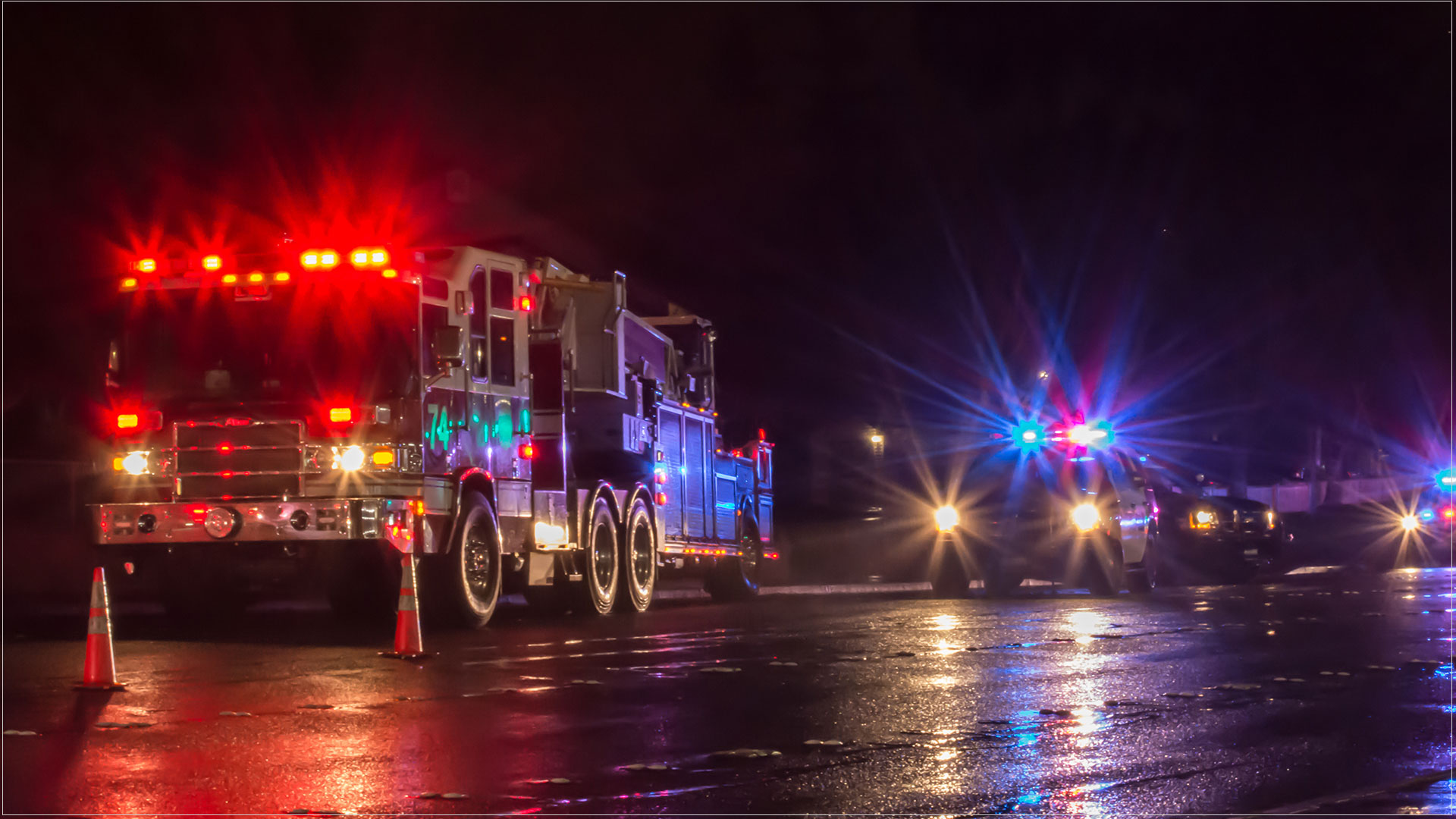If you are in distress, you can call or text 988 at any time. If it is an emergency, call 9-1-1 or go to your local emergency department.
- Professional Resources, Reports
First Responder Q&A COVID-19 Resource
We have received questions that discussed internal or administrative scenarios within an organization that due to the unique nature of, we are unable to provide answers to. Please accept this reminder that this service aims to provide general answers and should not be used as a clinical service. Question: Our work supports front-line services, we are not delivering front-line services so staff are experiencing a different kind of stress. How would you suggest I open the conversation with them, so that they become more aware of how they are behaving and the underlying feelings they are experiencing? Countless studies have identified the impacts of stress on decision-making, including consequences such as a higher likelihood of tunnel vision, impulsiveness, and poor consideration of potential negative outcomes, or, conversely, poor concentration, paralysis in making choices, and impaired memory. Sometimes, a bit of formal education and discussion about the impact of high levels of stress can start a conversation about the particular stresses that people are facing and about the coping strategies they may be using. Further, owning some of the stress (by, for example, talking about the additional challenges being faced as a supervisor and how your stress may be getting transferred to other staff) can invite others to open up about what they are experiencing. Additionally, talking about specific behaviours (or, more broadly, developing a workplace culture in which errors are viewed more as learning opportunities than as disciplinary concerns) rather than about individuals may foster better dialogue, having reduced a likely level of defensiveness. Some stress can be a good thing, providing motivation, getting us out of bed in the morning, and prompting us to make some positive personal or professional changes. Too much stress leads to drop- offs in performance, to negative physiological and psychological changes, and to health consequences. Finding ways to effectively manage stress in the workplace and at home is an important personal responsibility. Question: How can we best engage/encourage employees who are working from home and maybe noticing symptoms of depression due to isolation? For many people, the work environment provides an important social outlet: a chance to connect with colleagues and friends; to share news and plans; to feel as though one is part of the team pursuing particular goals. Working from home and connecting only by telephone or video-conference represents a major change and, for some, the loss of that social connection. The isolation and the change could be a trigger for the onset of depression. While depression is officially defined on the basis of nine specific symptoms, an easier measure of depression looks at other changes in a person’s routines: Has previously decent sleep become disrupted or non-restorative? Has an exercise regime become much more sporadic? Has there been a loss of interest in activities that used to be enjoyed? Has appetite shifted, contributing to weight gain through higher consumption of comfort foods or weight loss through disinterest? Are we seeing withdrawal, irritability, moodiness, problems with concentration, lapses in memory, fatigue, indecision? More alcohol being consumed? And, while not necessarily actively thinking about suicide, is there some passive ideation or vague commentary, such as, “I don’t really see the point anymore”? The symptoms we may notice when connecting with our colleagues who are working from home may be obvious or may be subtle. When someone who is typically outgoing, happy to talk about the weekend, effusive and engaged, starts to become passive, lethargic, and disengaged, discreetly reaching out and asking some simple questions shows support and offers assistance. “You don’t seem yourself. Is something going on?” “Anything I can do to help?” “I’m really missing our time to talk about non-work stuff. Would you like to meet for a virtual coffee or beer?” What’s missing in working from home is that personal connection. When signs or symptoms of depression begin to surface, finding ways to restore that connection, to build on relationships, to give support, finding ways to enhance and rebuild that connection becomes more important. Question: We have essential workers that have to travel between provinces to carry out their jobs. Most of the time, this is via air travel. In some cases, this causes individuals to be concerned for their well-being. We, as a company, supply them with all the required protection, as recommended. My question is, how can we supply them with additional information or reassurance to help keep their anxiety or fears to a minimum during these times? Anxiety often stems from two sources: an informational or cognitive component; and, an affective or emotional component. Providing accurate information such as the exceptionally high filtration rate of HEPA air cleaners used on passenger planes in Canada may provide reassurance, but we often override the value of science and statistics with anecdotes of rare occurrences. In short, telling people there’s nothing to worry about can actually increase their worry. Instead, people can be encouraged to challenge their own assumptions and do their own research: ‘Thinking about the last time you flew, how did that work out?’ ‘And the time before that?’ ‘And the time before that?’ Or, you might ask people to play out the presumed problematic scenario: ‘If something did happen, what would be the likely outcome?’ For example, when a colleague says “The boss wants to see you”, what’s the first thing that goes through your head? For many people, the initial assumption is about getting in trouble for some presumed, recent mistake. In reality, what has been the history of getting called to the boss’s office? Likely, history is sometimes positive, sometimes negative, and quite often neutral. Further, even if I did do something negative, the likely outcome is that I’ll be told to fix it. I will not lose my job; and, I will not be living in a box, down by the river. Anxiety often stems from our tendency to catastrophize and play out a worst-case scenario. Taking a few seconds or minutes to look at our history and to consider realistic outcomes can often do a lot more to calm our fears than does a further recitation of some scientific fact.
- Professional Resources, Reports
First Responder Q&A COVID-19 Resource
First Responder Q&A COVID-19 Resource
- COVID, Frontline workers
We have received questions that discussed internal or administrative scenarios within an organization that due to the unique nature of, we are unable to provide answers to. Please accept this reminder that this service aims to provide general answers and should not be used as a clinical service. Question: Our work supports front-line services, we are not delivering front-line services so staff are experiencing a different kind of stress. How would you suggest I open the conversation with them, so that they become more aware of how they are behaving and the underlying feelings they are experiencing? Countless studies have identified the impacts of stress on decision-making, including consequences such as a higher likelihood of tunnel vision, impulsiveness, and poor consideration of potential negative outcomes, or, conversely, poor concentration, paralysis in making choices, and impaired memory. Sometimes, a bit of formal education and discussion about the impact of high levels of stress can start a conversation about the particular stresses that people are facing and about the coping strategies they may be using. Further, owning some of the stress (by, for example, talking about the additional challenges being faced as a supervisor and how your stress may be getting transferred to other staff) can invite others to open up about what they are experiencing. Additionally, talking about specific behaviours (or, more broadly, developing a workplace culture in which errors are viewed more as learning opportunities than as disciplinary concerns) rather than about individuals may foster better dialogue, having reduced a likely level of defensiveness. Some stress can be a good thing, providing motivation, getting us out of bed in the morning, and prompting us to make some positive personal or professional changes. Too much stress leads to drop- offs in performance, to negative physiological and psychological changes, and to health consequences. Finding ways to effectively manage stress in the workplace and at home is an important personal responsibility. Question: How can we best engage/encourage employees who are working from home and maybe noticing symptoms of depression due to isolation? For many people, the work environment provides an important social outlet: a chance to connect with colleagues and friends; to share news and plans; to feel as though one is part of the team pursuing particular goals. Working from home and connecting only by telephone or video-conference represents a major change and, for some, the loss of that social connection. The isolation and the change could be a trigger for the onset of depression. While depression is officially defined on the basis of nine specific symptoms, an easier measure of depression looks at other changes in a person’s routines: Has previously decent sleep become disrupted or non-restorative? Has an exercise regime become much more sporadic? Has there been a loss of interest in activities that used to be enjoyed? Has appetite shifted, contributing to weight gain through higher consumption of comfort foods or weight loss through disinterest? Are we seeing withdrawal, irritability, moodiness, problems with concentration, lapses in memory, fatigue, indecision? More alcohol being consumed? And, while not necessarily actively thinking about suicide, is there some passive ideation or vague commentary, such as, “I don’t really see the point anymore”? The symptoms we may notice when connecting with our colleagues who are working from home may be obvious or may be subtle. When someone who is typically outgoing, happy to talk about the weekend, effusive and engaged, starts to become passive, lethargic, and disengaged, discreetly reaching out and asking some simple questions shows support and offers assistance. “You don’t seem yourself. Is something going on?” “Anything I can do to help?” “I’m really missing our time to talk about non-work stuff. Would you like to meet for a virtual coffee or beer?” What’s missing in working from home is that personal connection. When signs or symptoms of depression begin to surface, finding ways to restore that connection, to build on relationships, to give support, finding ways to enhance and rebuild that connection becomes more important. Question: We have essential workers that have to travel between provinces to carry out their jobs. Most of the time, this is via air travel. In some cases, this causes individuals to be concerned for their well-being. We, as a company, supply them with all the required protection, as recommended. My question is, how can we supply them with additional information or reassurance to help keep their anxiety or fears to a minimum during these times? Anxiety often stems from two sources: an informational or cognitive component; and, an affective or emotional component. Providing accurate information such as the exceptionally high filtration rate of HEPA air cleaners used on passenger planes in Canada may provide reassurance, but we often override the value of science and statistics with anecdotes of rare occurrences. In short, telling people there’s nothing to worry about can actually increase their worry. Instead, people can be encouraged to challenge their own assumptions and do their own research: ‘Thinking about the last time you flew, how did that work out?’ ‘And the time before that?’ ‘And the time before that?’ Or, you might ask people to play out the presumed problematic scenario: ‘If something did happen, what would be the likely outcome?’ For example, when a colleague says “The boss wants to see you”, what’s the first thing that goes through your head? For many people, the initial assumption is about getting in trouble for some presumed, recent mistake. In reality, what has been the history of getting called to the boss’s office? Likely, history is sometimes positive, sometimes negative, and quite often neutral. Further, even if I did do something negative, the likely outcome is that I’ll be told to fix it. I will not lose my job; and, I will not be living in a box, down by the river. Anxiety often stems from our tendency to catastrophize and play out a worst-case scenario. Taking a few seconds or minutes to look at our history and to consider realistic outcomes can often do a lot more to calm our fears than does a further recitation of some scientific fact.
SHARE THIS PAGE
RELATED

Review our Assessment Framework for Mental Health Apps — a national framework containing key standards for safe, quality, and effective mental health apps in Canada.

To help expand the use of e-mental health services, we developed four online learning modules based on our Toolkit for E-Mental Health Implementation, in collaboration with the Centre for Addiction and Mental Health (CAMH).

Stepped Care 2.0© (SC2.0) is a transformative model for organizing and delivering evidence-informed mental health and substance use services.
